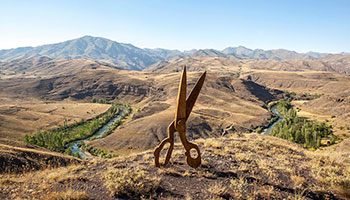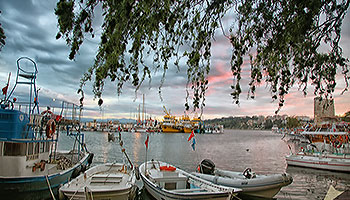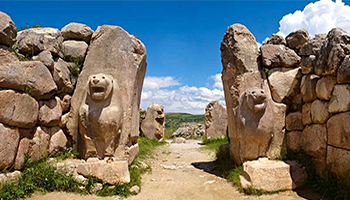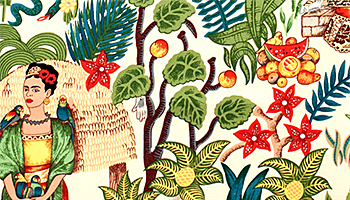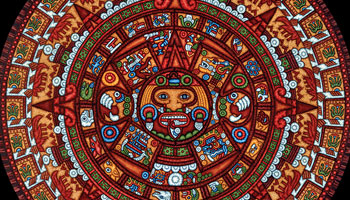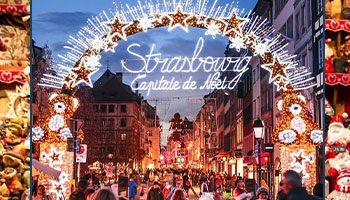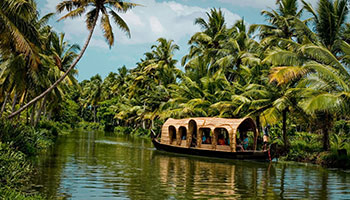 YURT DIŞI TURLAR
YURT DIŞI TURLAR
Basında Dünyanın Renkleri
Red plates and fish bones
Aylin Öney Tan aylinoneytan@yahoo.com August 18, 2014 / Hürriyet DailyNews
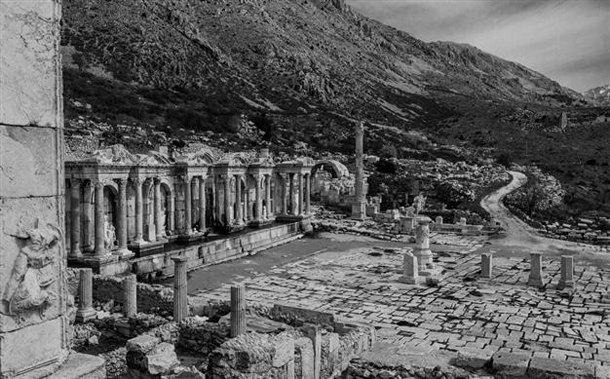 Photo by Fikret Atalay
The ship slowly left the harbor, making its way toward the open sea laden with precious goods from the land of plenty. The sight of the mighty Taurus mountains would soon be left behind. The veteran vessel creaked as it swayed like a cradle in the deep Mediterranean waves. Its voyage to the port of Alexandria was long; down in the cargo were valuable cedar tree planks, amphorae full of olive oil and wine and dried fruit. All were neatly secured by red colored plates and crockery stacked in between, so tightly that all the ship’s load would withstand the long sea voyage without breaking or becoming loose.
Almost 2,000 years later, an archaeologist and an architect were gazing through the dusty windows of the Cairo Museum, in the halls of the less popular, sleepy Roman section. It was a boring tedious visit to the museum, when all of a sudden they could not help but break the silence: “This is our flask!” they uttered simultaneously. It was theirs indeed. They were from the team of the Sagalassos excavation in Turkey, and the unidentified red earthenware was undoubtedly from the site of Sagalassos. This modest discovery of theirs in the Cairo Museum would result in the change of many artifact tags in many museums around the Mediterranean. Heroes of the discovery were Jeroen Poblome, a ceramic specialist, now the head of the excavation, and Ebru Torun an architect from Middle East Technical University (ODTÜ) who specialized in the conservation of historic monuments at Leuven University. All those red pottery from Sagalassos were not well known before, and although they were all around in many Mediterranean museums, they were likely to be tagged as of unknown source. Now they had an address. Years later another interesting finding led to the discovery of what was the shipload on the way back. The archaeo-zoologist in Leuven University was going crazy in identifying the fish bones from 72 varieties she got from the Macellum, the Roman equivalent of a gourmet meat & fish market. Obvious and easy to identify was all the fishes from the streams which Sagalassos was famous for; or like the Pseudophoxinus handlirshii, endemic to the Lake Eğirdir, pretty close-by, near Burdur. Marine fishes were obviously from the seashores down from the Taurus Mountain, the town was known to have lively commercial activity with various ports on the Mediterranean coast. But one particular fish was unusual. That particular one was not to be found anywhere near the site, it was an exotic fresh water fish definitely not from Anatolian waters. Based on geographic distribution and DNA analysis the fish was identified as of Nile origin, obviously brought to Sagalassos in salted, dried and/or smoked form. Suddenly it all made sense. The ships coming back from the port of Alexandria, were full with goods from Egypt and the Indian Ocean, with specialties like smoked gourmet fish, together with slaves to serve them in lavish banquets. If the tableware made in Sagalassos could end up on Egyptian tables, why wouldn’t fish from the Nile come all the way up to Taurus hills to adorn feasts perhaps after a leisurely day in the baths. Sagalassos had become the ultimate resort place of luxury seeking hedonist Romans in the later periods, famous for its crisp beautiful weather, clear foamy springs and breathtaking views of Taurus peaks, especially of İskender Tepesi, named after the Alexander the Great. Finally the mystery of two thousand years were solved, the fish was back on the plate. Now one could easily imagine this elusive delicacy from the Nile served on elegant red plates, may be to Hadrianus? Bite of the week Recipe of the Week: How could we not think of the ubiquitous lakeside specialties of Anatolia: Kiremitte Alabalık, that is baked trout, literally translated as trout on a roof tile. The wonderful oval-shaped terra-cotta earthen serving plates found almost everywhere in Anatolia is what you need for this recipe, and a fish of course. Take one trout per person. Slice through the spine, salt and pepper both inside and out, and rub with olive oil. Take a handful of unripe sour grapes, chop or crush, mixed with a handful of thinly sliced onions or chopped spring onions and salt to taste. Stuff this filling into the cavity of fish. Place each fish on a terra-cotta plate. Bake in very hot oven (300ºC) for about 15 minutes. Fork of the Week: The newly opened Sagalassos Lodge and Spa offers a bounty of local tastes from Ağlasun, the contemporary settlement of Sagalassos. Owner Fikret Atalay, also the founder of the Koptur Travel Agency, has been bringing tours to the site for 15 years, and now aims at promoting not only cultural tourism but also trekking and mountaineering in the region. Actually they were the first to discover the potential of this wonderful region. They have a local feast on Friday evenings, or upon request they prepare special feasts including local fresh water trout baked on tiles wrapped in vine-leafs. Cork of the Week: Likya winery is another treasure hidden in the Taurus Mountains. Their vineyard is situated up in Elmalı above 900 meters altitude, lending an aromatic quality to their wines. They are also trying to revive indigenous varieties like Kızılbel, Tilki Kuyruğu. It’s worth checking out! http://www.likyawine.com/ |

